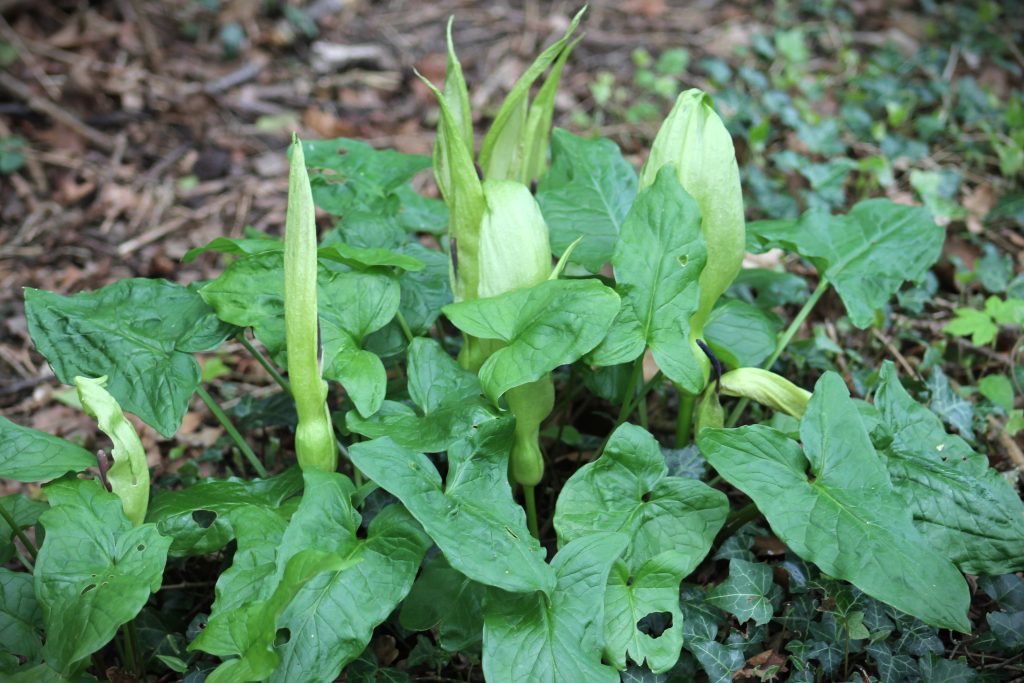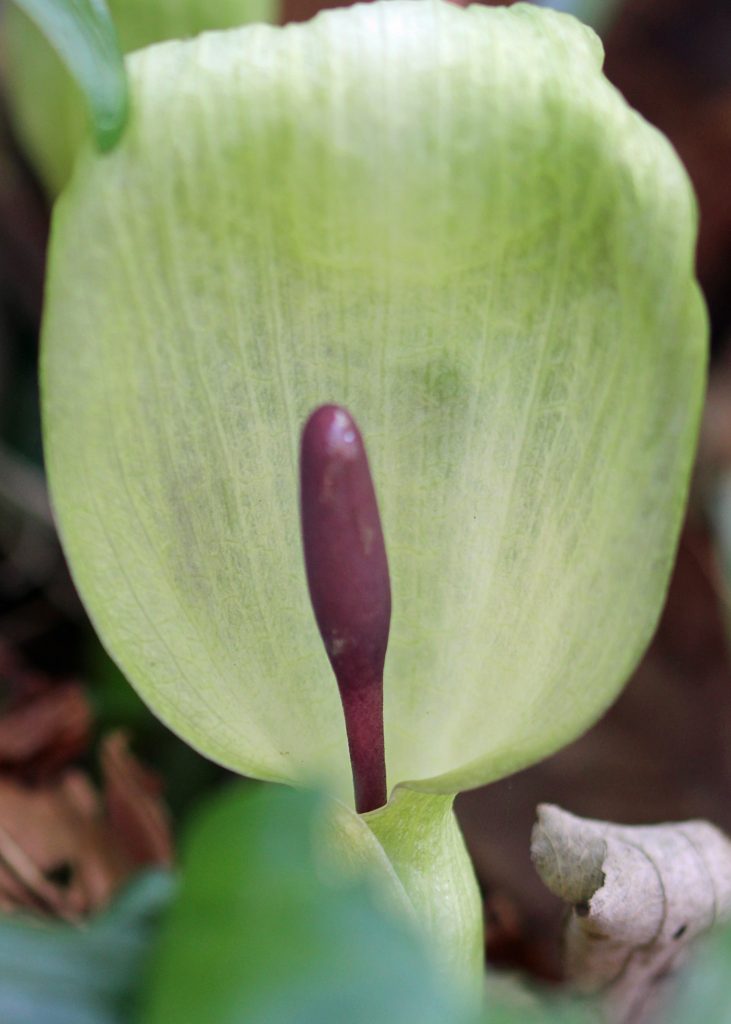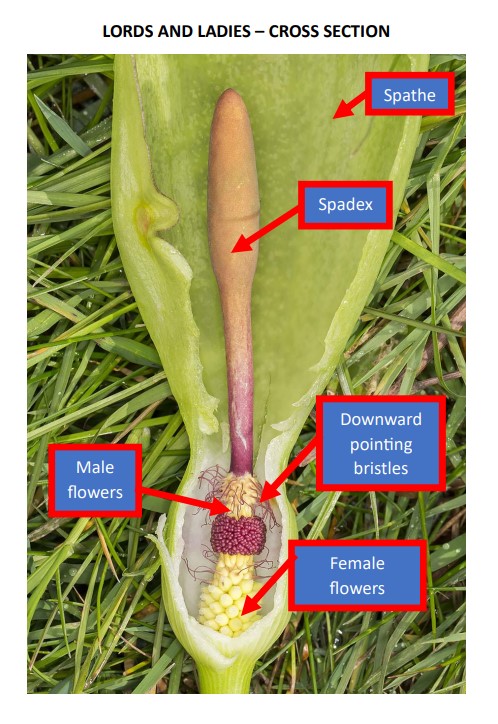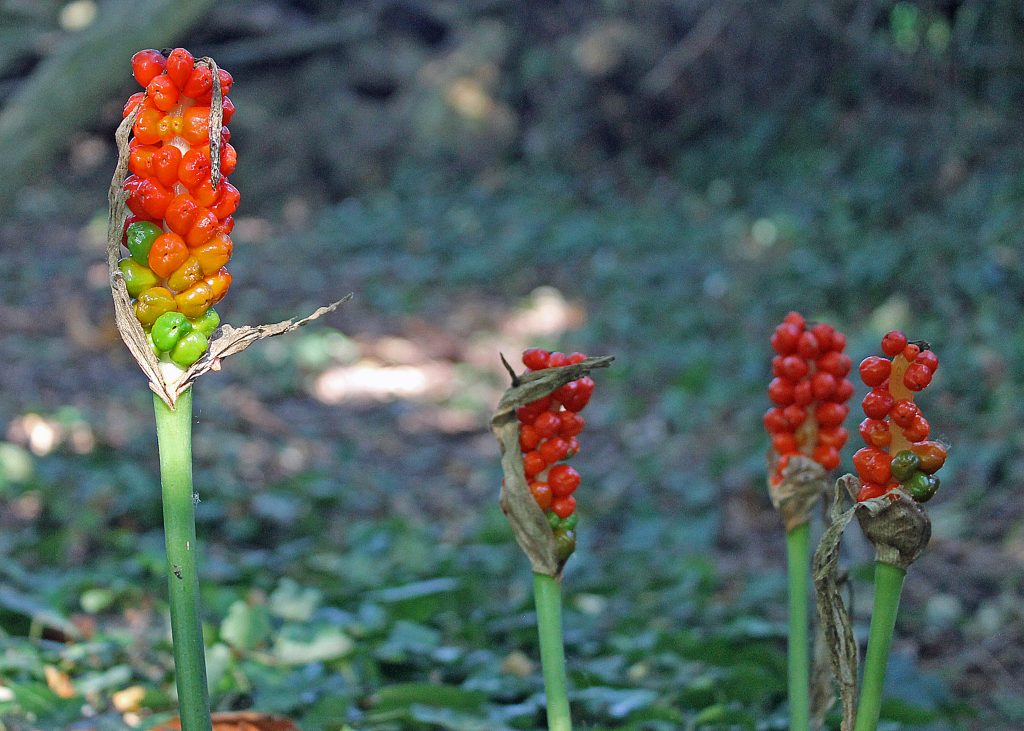This feature article is about a common plant that can be found in shady areas of woodland, hedgerows and perhaps a corner of your garden. It is a member of the Arum family (Arum maculatum), and goes by many names, with ‘Lords-and-Ladies’ or ‘Cuckoopint’ probably the two most familiar.

Lords-and-Ladies leaves and spathes 
The spadex and surrounding spathe
When it emerges in early Spring, Lords-and-Ladies can be recognised by its large, glossy, arrow-shaped leaves, and a leaf-like flower head (the ‘spathe’) that curls around a long inner spike (the ‘spadex’). It is the spadex protuberance, together with the enveloping spathe, which is the source of many of the common names for the plant; most with lewd connotations: ‘Adam and Eve’, ‘Cows and Bulls’, ‘Sweethearts’, and around a hundred more. The name ‘Cuckoopint’ is derived from the old word ‘pintal’, meaning ‘penis’ (with ‘Cuckoo’ coming from the supposed coincidental timing of the arrival of the Cuckoo and the blooming of the plant). Another name for the plant is ‘Jack in the Pulpit’, which seems to have a less phallic origin.
The peculiar structure of ‘Lords-and-Ladies is linked to its unusual strategy for pollination. The lower part of the spadex contains several small, yellow unisexual flowers: female flowers at the base and, just above them, the male flowers. The cross-section diagram below will help you conceptualise this structure. The spadex spike gives off a fetid smell and generates heat, which helps volatize the chemicals in the flowers. In this stage, the spadex is referred to as an ‘inflorescence’. This smell and warmth proves highly attractive to small flies, but it is part of a trap! Flies visiting the plant enter the floral trap through a zone of backward-pointing bristles, and fall into a smooth-walled chamber from which, for the moment, escape is impossible. The flies gorge themselves on the stigmatic secretion produced by the female flowers at the base of the spadix. Whilst enjoying their feast, those trapped flies which have previously visited another Lords-and-Ladies plant carry out cross-pollination. At night the female stigmas no longer function and the male flowers, situated a little higher on the spadix, release a rain of pollen onto the flies. The next day, when the smell, heat, and food are gone, the bristles wilt, thus allowing the pollen-laden flies to escape. In all probability, the released flies are soon recaptured by another Lords-and-Ladies plant. And so it goes on; a wonder of nature relying on expert timing!

Eventually the spathe will wither away. All that remains are the fertilised female flowers, which soon become red fruits. These small spikes of fruits are a common sight in woodland and shady areas during autumn. The fruits start green, but eventually ripen and turn bright red.

The red fruit of Lords-and-Ladies
Bright red berries are usually a warning sign, and this is certainly the case here. The red berries of Lords-and-Ladies are poisonous to humans. Indeed, it wouldn’t be wise to try to eat the leaves either, for they too are highly toxic. Nevertheless, some birds (particularly Pheasants) will eat the berries. Seed dispersal – a necessity in plants – is carried out by the birds that eat the berries and defecate the seeds.
Look out for these wonderful plants. Watch them develop and wonder at nature’s diverse, and often intricate, methods of pollination and propagation.
All photographs taken in Bredfield, with the exception of the background cross-section image which was taken by Bill Welch.

